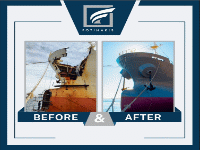The US Coast Guard’s Office of Commercial Vessel Compliance recently released its U.S. Port State Control Annual Report for 2024 highlighting a 200% increase in untreated ballast water discharges compared to 2023.With
The US Coast Guard’s Office of Commercial Vessel Compliance recently released its U.S. Port State Control Annual Report for 2024 highlighting a 200% increase in untreated ballast water discharges compared to 2023.
With this result, there’s still a risk of invasive species arriving in ballast water. And a review of research into the organisms found in ballast water published in March highlights just how limited current knowledge is.
The study found that 53.5% of the sampling effort of in-situ ballast water has been concentrated in North America, as determined from a review of 2,088 studies published between 1932 and 2022.
For both number of publications and sampling effort, approximately 85% of data is from the northern hemisphere.
Only 12% of publications documenting plankton organisms sampled in ballast water were from the southern hemisphere, and no study reported analyses of benthic communities in ballast tanks outside of North America and Europe.
Without ballast water management, a single discharge could release billions of organisms. However, ships with the greatest quantity of ballast water discharge aren’t necessarily the greatest environmental risk, as the diversity and viability of organisms varies with source region, transit route and season.
The
Content Original Link:
" target="_blank">



































































